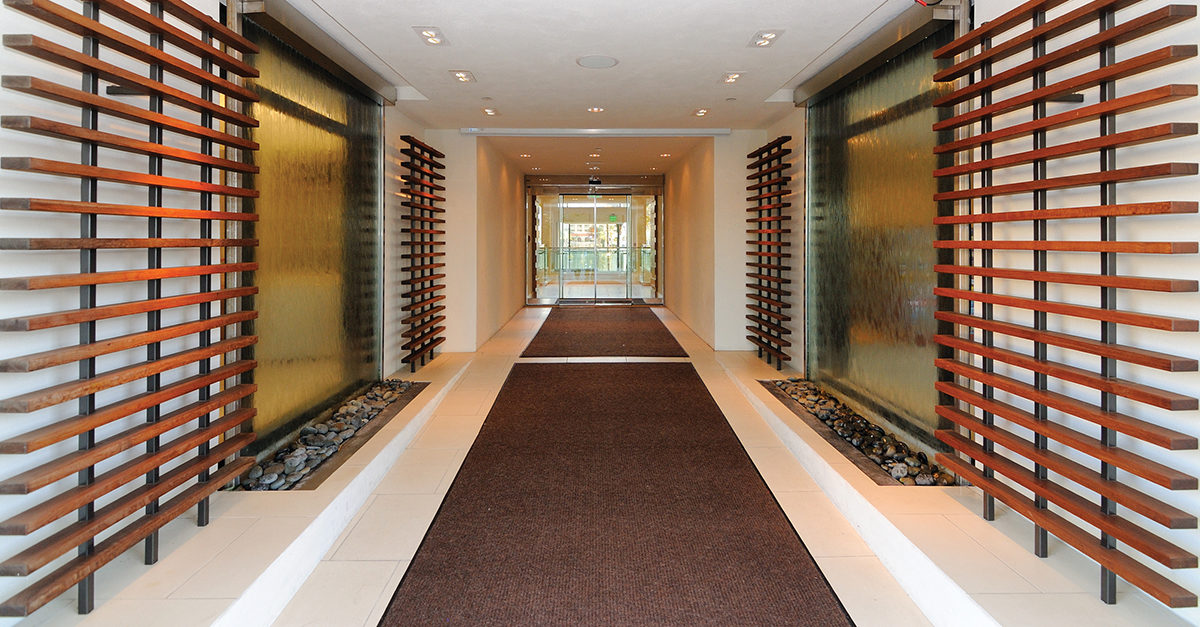During a program entitled “Invisible but Invaluable,” a well-known television minister discussed how things, events, or people working in the background with little or no notice can prove invaluable in helping someone or something to succeed.
While they are not invisible, mats are often underappreciated by facility managers and cleaning workers, even though they are invaluable to a facility. Very simply, mats help to keep facilities clean, healthy, and safe for building users.
However, there are a lot of things managers and cleaning professionals should know about mats, from how to install and select them to how to care for them. There are also key terms used to describe mats that managers and cleaning professionals should know. Accordingly, here are a number of tips and suggestions about mats—maybe more than you ever thought possible—to help you properly prepare and maintain your facility.
Installation
- Install mats on a clean, dry surface and do not overlap them. They should have a backing that secures them to the floor to help prevent “surfboarding,” which is what happens when the mat moves with foot traffic. Surfboarding can cause slip-and-fall accidents.
- Some mats are very light, causing them to fold or drift and lose their placement. A heavier mat, typically a purchased mat, will likely hold its position and remain flat, resulting in better performance.
- Place mats directly next to each other and the building entry. Gaps between the mats can defeat the benefit that mats provide, which is primarily to remove moisture and soils from shoe bottoms. Space between mats could also possibly lead to a slip-and-fall accident.
- Scraper mats are placed outdoors to scrape off larger debris and moisture; wiper/scraper mats are installed directly inside the facility for further removal of debris and moisture capturing; wiper mats are installed in the lobby or walk areas, as the final line of defense.
- Each type of mat should be 5 feet long; mats of this length can trap and hold as much as 85 percent of all soil and moisture that otherwise would be walked into a facility.
- Do not install mats in any area for which they are not intended—for instance, over carpeting, as this could cause curling or surfboarding and a potential accident.
Installation Beyond Entryways
- Install mats in transitional areas, for instance, between a warehouse and main office area or between a carpeted and hard-surface floor, or vice versa. Some transitional mats have an antibacterial adhesive to help prevent contaminants from moving from one area to another.
- Install mats in elevators and before elevator (or escalator) entrances to stop soil from spreading from one floor to another.
- Anti-static mats should be installed around large electronics, such as copiers, large computers, and electronic warehouse or laboratory equipment.
- Place mats under or around water fountains to absorb spills.
- Mats should be installed at entrances/exits of commercial kitchens to collect soil, grease, and debris.
- Anti-fatigue mats are necessary in any area where workers must stand for several hours each day.
Cleaning and Care
- Always check mats for rippling, curling, or torn edges; if found, remove or replace the mat.
- Once installed, make sure the floor beneath the mat is kept clean and dry to protect the mat’s backing and to prevent mold and mildew from developing.
- Mats should be vacuumed regularly, even throughout the day; frequency is determined by foot traffic and weather conditions.
- Purchased mats can be cleaned using carpet extractors. Once the mats become excessively saturated with moisture or soil, they should be extracted, especially if they have been subjected to snow melter, ice, salt, etc.
- Clean the bottom of the mat on a regular basis. After vacuuming the top, take the mat to a clean area, preferably outside of the facility, lay it flat and face down, and vacuum or sweep the backing. If it’s soiled, use a damp mop or cleaning cloth and a mild cleaning solution to clean the backing. Allow the mat to air dry and reinstall.
- If mats need to be stored, do not roll or fold them; this can damage or weaken the backing of the mat and cause curling. Instead, store them flat, one on top of another until they are needed.
There is a phrase we should keep in mind when we think about mats: “Think outside the box.” Managers and cleaning professionals are encouraged to experiment by installing mats in any area of a facility that tends to become excessively soiled or receives more wear and tear than other areas. Again, while mats are not invisible, they can prove invaluable in scores of traditional and less traditional ways.


